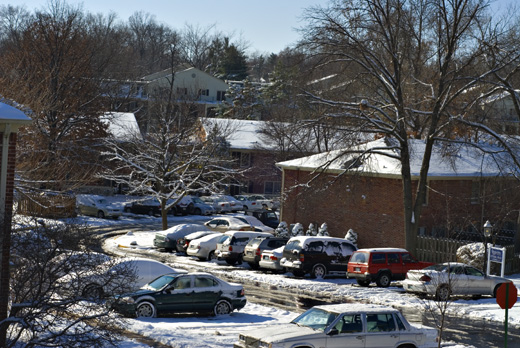Recovered from the Wayback Machine.
Lane Hartwell has posted a statement addressing some of the misconceptions about the use of her photo in the Bubble 2.0 video. For instance, one misconception is that she’s suing Richter Scales. She wrote:
It has been erroneously reported in various media outlets and blogs that I have either filed or am in the process of filing a lawsuit against The Richter Scales. This is simply not true. At no point has there been any talk of filing a lawsuit on my behalf. To make matters worse, I have yet to be contacted by even one of these media outlets or bloggers to verify the authenticity of my supposed lawsuit.
Lane is actually easy to communicate with via email, which leads one to wonder if people have gotten so used to twittering, they’ve forgotten there are other forms of communication.
Tara Hunt had two good posts on this: Tragedy of the Commons: Lane Hartwell vs. Richter Scales and Mobs with Pitchforks and Mis-information. Tara speaks as a person who was busted herself for using photos and art without permission. She writes:
Whether or not Lane invoking the DMCA is legal or not isn’t really what matters here and making it about ‘hurt feelings’ belittles what is really at stake here. What is at stake here is that the continuance of individual abuse of the privileges of the works put into the commons will lead to fewer of those works being put into the commons.
That is the point. Perhaps because we have a knee jerk reaction to the term, DMCA, we tar and feather any use. However, Lane trying to protect the integrity of her photography is not the same thing as Disney trying to preserve the Mouse in perpetuity. If we overreact about copyright abuses from corporations to the point where we deny the validity of copyright for individuals, then we’re not good neighbors in a village sharing a commons–we’re nothing more than the Horde looking to sack the village; reacting petulantly, even violently at being denied our goodies. The issue is less one of copyright than it is one of respect. Lane deserves the respect due a person in her craft.
Respect also plays in a sub-thread that ended up slowly emerging from the original discussion. In Mathew Ingram’s post on this topic, as I wrote previously, Michael Arrington wrote in a comment to me that the only reason I was supporting Lane, was because she was a woman:
Mathew is right, you are wrong. But since Lane is a woman, it really doesn’t matter what she did as far as you are concerned. She’s a woman, so she’s right.
I was flabbergasted. I never once thought about Lane’s sex when forming my opinion. Any of you who have read me for years know that copyright has been an issue near and dear to my heart, and I’m actually a copyright supporter–not the Disney type of copyright, but copyright as it was originally intended.
Several people did respond to the statement, both in my comments, in a post that Jeneane Sessum wrote and also in Tara’s posts. She didn’t specifically mention this in her second post, but Tara did allude to this:
I’m really put off that there are so many people spreading, but also believing, bad rumors in this case. I’m sure the many men behind the Richter Scales don’t want a mob sent out to harass a woman whose photograph they used. None of this was done in malice: the photograph used, the request for credit.
Why the maliciousness now? From uninformed bystanders?
We didn’t introduce the topic of gender in this discussion, but now that it has been introduced one can’t help wonder: given the rather astonishingly harsh criticism of Lane Hartwell is there a possibility that some of it goes beyond just our reaction to the DMCA term? Could this also have something to do with Lane Hartwell, being a woman, asserting her rights against a bunch of guys?
I don’t believe this of Richter Scales, the originators of the video. They seem truly unhappy that they’ve caused this unfortunate consequence, and didn’t attribute the photographers as they should. But when I read the following at a post Michael Arrington wrote, after leaving the comment directed at me at Ingram’s, I have to question the emotional context of some of this protest.
The real issue here is that Hartwell’s feelings were hurt. She wanted attribution in the video, and the creators ignored her. Attribution and people’s feelings are not things copyright law considers; rather, it sets forth the rules under which copyrighted works may be or may not be used by others.
The real issue here is that Hartwell’s feelings were hurt. (Also see the the comments to this post describing Michael running into Lane at an event yesterday.)
Haven’t we seen this before? When a woman reacts to an event, her reaction is reduced to one of ‘feelings’, rather than rights or laws, or even common decency? Lane Hartwell did not react as a woman whose feeling were hurt. She reacted like a professional photographer, frustrated with people stealing and using her photos without giving her credit or asking permission, who then contacted the transgressors. When the group who created the video responded that their use was fair use, rather than respect her wishes, or even contact her directly about the use, she then hired an attorney who specializes in IP law to work with her to resolve this issue. An attorney, I might add who represented, pro bono, ThinkSecret when sued by Apple looking for the names of ThinkSecret’s sources. Perhaps we might want to give him the benefit of the doubt that a) he’s not evil, b) he knows what he’s doing, and c) Lane knows what she’s doing.
Agree with Lane’s move, don’t agree–there is nothing wrong with having an opinion on this issue. However, when we start advocating violence, plotting how to destroy her career, or belittling Lane’s actions because she is a woman than, frankly, we have more problems in the commons than whether we get to view a funny video, or not.
Michael Arrington considers me …one of the most unpleasant people he’s ever known. Fine, great, perhaps I am. I, however, didn’t bring up the ‘gender card’, but when it’s played on me, I sure as hell am not going to fold and leave the game.
What do we want from this environment? Where only those who are popular are allowed to determine the ethics of our interactions? That webloggers can speak softly in weblogs, but nastily in comments, Twitter, and backchannels and all is well? Where women can be so easily and so frequently belittled with nary a raised eyebrow? Mobs can be whipped up and turned loose without a thought to the consequences?
That only the little people get called out for their actions?
Weblogging is ten years old today. Huzzah! Now, what do we want from this environment? Because what we’re getting is something I don’t value anymore.
update
Lane Hartwell has issued a more detailed statement:
A photo of Owen Thomas that I shot under contract for Wired News was used without my permission in a music video created by the Richter Scales. I own the copyright to the photo and, as I do in every instance where I find my work used without my permission, I contacted the band, told them my work was copyrighted and asked why they had used it without contacting me to license the work.
The band’s response was that upon receiving my complaint, they contacted an attorney who told them they had the right to use my work without gaining permission, paying a licensing fee or giving me credit. They said the video was a parody and thus the unauthorized use of my image was protected under something called “Fair Use”. Normally when I contact someone about my work, they apologize and remove it immediately. Because they didn’t, and mentioned talking to a lawyer, I felt it necessary to talk to a lawyer myself. Despite reports to the contrary, I have not sued the band. I spoke with a lawyer to clarify my standing on the issue of copyright.
I suggest you read the whole thing. Especially those of you saying Lane’s feelings were hurt, she should never work again, and generally dwelling on her evilness.
There’s also a thing in the commons called an ‘apology’.


